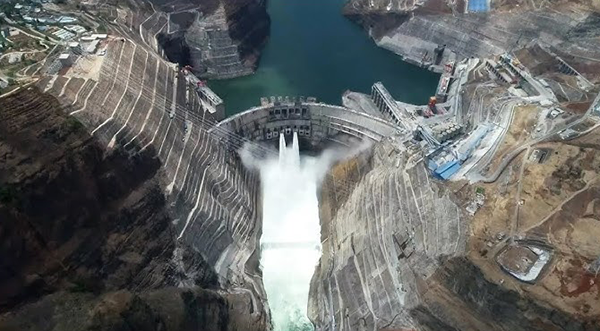Much of the attention given to BIM, digital twins and AI in construction technology has been focussed on pre-planning, project monitoring during construction and operational aspects after construction.
Yet the inescapable fact remains that in order for a project to rise from the ground, nails must be hammered, bricks laid, steel beams fastened together and concrete poured. These are activities dominated by humans for centuries.
However, this is starting to change. Automated processes are beginning to play a large part in construction today.
Over the past decade, the construction industry has been intrigued by exoskeletal lifting devices, was introduced to “Spot, the Robot Dog,” and has witnessed demonstrations of robotic bricklaying machines. More recently, self-driving construction vehicles and equipment has been used in certain applications to clear and grade building sites and to move large volumes of material.
Now, pure robotics that conducts structural fabrication is making an impact.
To some degree, the arrival of robotics is due to increased interest in prefabricated housing and commercial buildings, encouraged in part by issues such as current and projected labour supply shortages. A factory setting improves efficiency and safety and speeds up production, even if humans are doing the work. But as demand for prefabrication continues to grow, an increasing amount of automated, robotic machinery has become involved.
As reported in the Journal of Commerce, Toronto-based Promise Robotics is a Canadian leader in developing the automated capabilities of homebuilding factories. The company’s proprietary cloud-based robotic equipment has created over 10 million square feet of new housing since opening in 2019.
Promise is poised for further growth. In February, it expanded beyond its Edmonton factory with the addition of new production lines in a 60,000 square foot facility in Calgary which begins operations this summer.
The Calgary factory will be capable of producing up to one million square feet of housing annually, the company says, and act as a demonstration facility in advance of a planned expansion into several major centers in the United States where Promise currently sells and operates. The company says each 40,000-to 60,000-square-foot facility would house four to six robotic workers overseen by a handful of humans.
Recent news from the U.K. suggests robotic homebuilding does not necessarily mean a fixed factory setting.
Automated Architecture (AUAR) has secured £5.1 million (CDN$10 million) in funding to further develop its automated mobile homebuilding platform the company describes as a “plug and play micro-factory deployable anywhere.”
“Our micro-factories are compact, mobile manufacturing units that bring automated construction to your doorstep. They produce timber elements locally using AUAR’s system, cutting transport costs and enabling faster, higher-quality builds. Access via flexible, rental-based contracts — no CapEx required.”
Further evidence that robotic processes are gaining acceptance is seen with the growth of 3D Concrete Printing (3DCP). Entire housing developments in the United States have been created by mobile concrete printers that grow in size each year and therefore become capable of ever-larger 3D structures.
The direction of future large-scale robotic construction extends beyond buildings to infrastructure, as can be seen in China, where technology ambitions have few limits.
A fleet of autonomous roadbuilding equipment supplied by Sany, a major Chinese heavy machinery manufacturer, was able to build a 158-kilometre stretch of highway along the Beijing-Hong Kong-Macao Expressway.

All vehicles were unmanned, including a paver capable of laying a 19.25-metre-wide stretch of asphalt in a single pass. The paver was accompanied by six 13-tonne double-drum rollers and three 30-tonne rubber-wheel rollers operating in a 1-3-3-3 parade formation guided by algorithms in combination with satellite positioning operating in a low-latency communication network. This enabled real-time path planning and precise operational control.
Perhaps even more impressive is the construction of a 180-metre-high dam on the Tibetan Plateau in southwestern China. Now underway, the dam is being created entirely with robotic machinery including a variety of automated vehicles and equipment such as excavators, bulldozers, rollers and trucks, all under central AI control. The only human activity involved has been the mining and processing of the building materials.
The dam is essentially the world’s largest 3DCP project ever attempted.

“Dam construction and 3D printing are identical by nature,” said Prof. Liu Tianyun, the lead scientist on the Tibetan project.
Liu Tianyun and the other project leaders say AI and robotics will, in fact, result in a better finished project, commenting that a robotic vehicle is more precise and consistent than one operated by a human. Material delivery errors would also be reduced. These benefits are on top of the improved safety, since humans are almost entirely eliminated from the site.
Liu Tianyun’s team believes robotic technology could change how the world builds its cities and structures in the future. They might be correct.
John Bleasby is a freelance writer. Send comments and Inside Innovation column ideas to editor@dailycommercialnews.com.



Recent Comments
comments for this post are closed